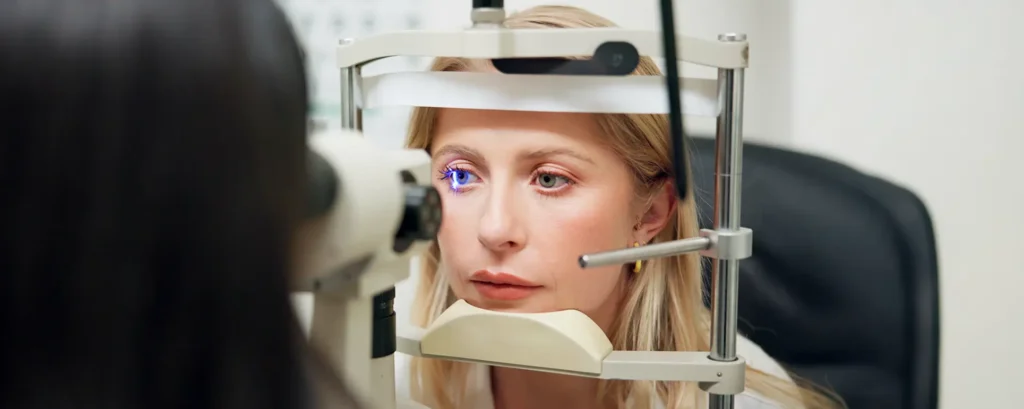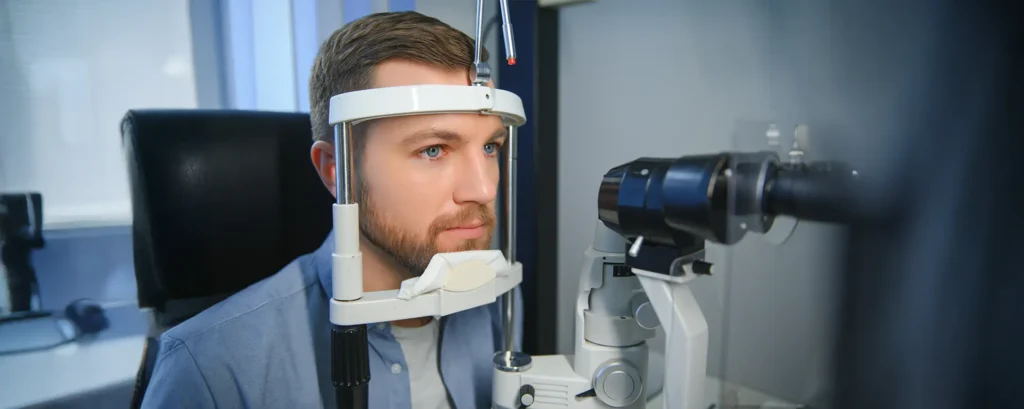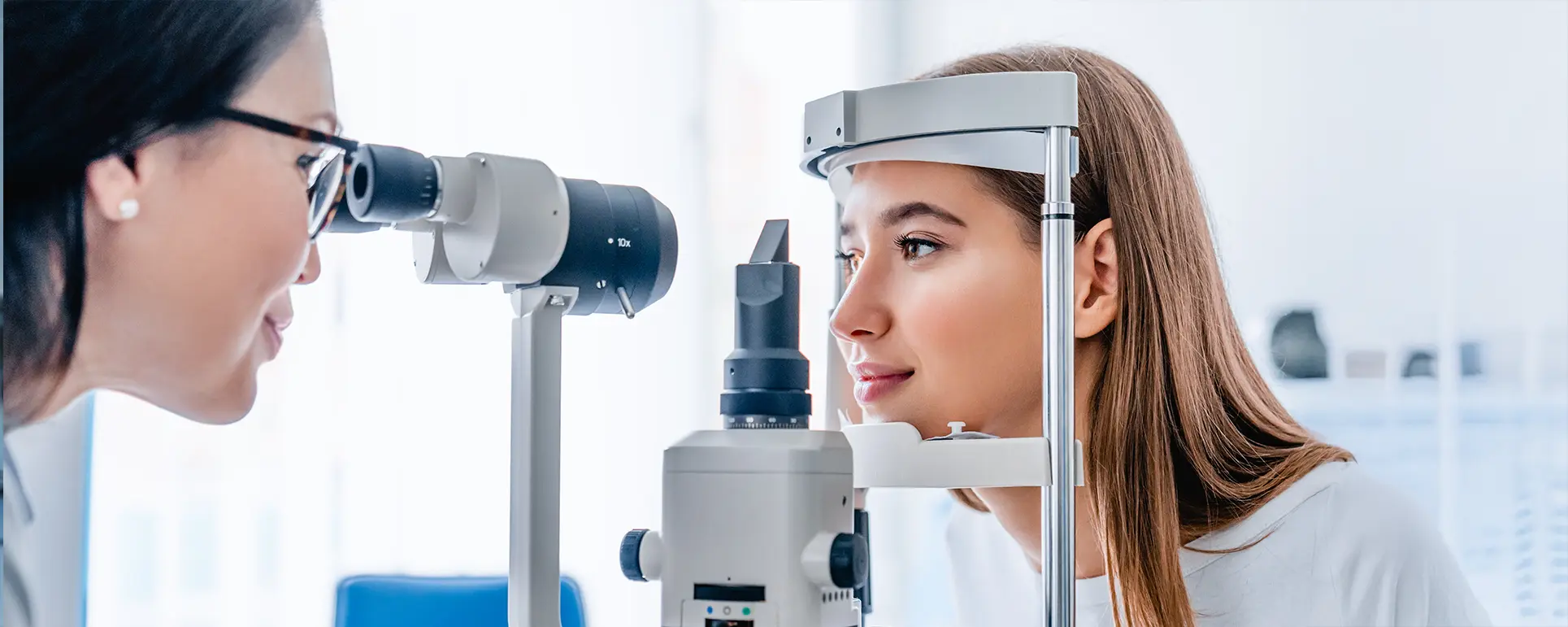When most people think of cataracts, they imagine them as something that comes with age – a condition that affects people in their sixties, seventies, or beyond. So, discovering cataracts in your thirties can feel surprising, even unsettling. You might wonder how this could happen so early, whether your vision will keep worsening, and what options you have for treatment.
The truth is, while cataracts in your 30s are rare, they are not unheard of. Genetics, certain medical conditions, trauma to the eye, or lifestyle factors can all contribute to early cataract formation. If you’ve been told you need cataract surgery at this age, you’re not alone, and it’s important to know that excellent treatment options are available.
In this guide, we’ll explore why cataracts can appear in your thirties, the symptoms you should be aware of, and the unique considerations for surgery when you’re younger. By the end, you’ll have a clear understanding of what’s happening to your eyes and what steps you can take next.
What Exactly Is a Cataract?
A cataract is the clouding of the eye’s natural lens, which sits just behind the iris (the coloured part of your eye). The lens normally focuses light onto the retina, allowing you to see clearly. When proteins in the lens break down and clump together, the lens becomes cloudy, leading to blurred vision, glare, and faded colours.
Cataracts usually develop slowly over time. Most people experience them in later life, but when they occur in younger adults, they’re often linked to specific underlying causes. Regardless of age, the only way to restore clear vision once a cataract significantly affects your sight is through surgery, where the cloudy lens is replaced with an artificial intraocular lens (IOL).
Why Do Cataracts Appear in Your 30s?

Cataracts in your thirties are uncommon, but there are several reasons why they might develop earlier than expected. One of the most common causes is genetics. If your parents or grandparents experienced cataracts at a younger age, you may be more prone to developing them too. Hereditary factors can influence how the proteins in the lens behave and how resistant they are to environmental damage.
Another cause is trauma. An injury to the eye – whether from an accident, sports, or work-related incident – can trigger the lens to cloud. Traumatic cataracts may develop soon after the injury or appear gradually over several years.
Medical conditions also play a major role. Diabetes, for instance, increases the risk of early cataracts, as do certain autoimmune diseases and metabolic disorders. Long-term use of steroids, whether oral or eye drops, is another well-recognised risk factor. Finally, lifestyle choices such as smoking, excessive alcohol consumption, or prolonged UV exposure can contribute to early lens changes.
Common Symptoms to Watch For
If you’re in your thirties, you probably don’t expect to have cataracts. That’s why recognising the symptoms early is important. Blurred or cloudy vision is the most obvious sign. You might also notice that colours appear faded or that you struggle with glare from bright lights, especially when driving at night.
Another symptom is the need for frequent prescription changes. If your glasses or contact lens prescription keeps shifting but your vision still doesn’t feel sharp, cataracts may be to blame. Some people also describe “ghosting” or double vision in one eye.
Because cataracts can affect each eye differently, it’s possible for one eye to feel worse than the other. This imbalance can make reading, driving, or even using digital devices more challenging. If you’re experiencing any of these issues, it’s worth having a comprehensive eye exam to check for early lens changes.
The Emotional Impact of Early Cataracts

Being told you have cataracts in your thirties can be a shock. You might feel it’s unfair to face a condition usually associated with older age. There can be worries about your career, particularly if your job relies heavily on clear vision – for example, driving, working with fine detail, or frequent computer use.
There’s also the emotional side of dealing with surgery. While cataract surgery is one of the most common and safest procedures worldwide, hearing you need it at a young age can feel daunting. You may also have concerns about how long the artificial lens will last, and what it means for your future eye health.
It’s completely normal to feel unsettled at first. But it’s important to remember that modern cataract surgery has excellent outcomes, and many people in your situation go on to enjoy years of clear, stable vision after treatment.
Why Cataract Surgery Is Different in Your 30s
Having cataract surgery in your thirties is not the same as having it at 70. Because you’re younger, your visual needs, lifestyle, and long-term outlook all require special consideration. One of the key differences is lens choice. At your age, the decision about which intraocular lens to implant becomes especially important because you may live with that lens for decades.
Younger patients often have higher expectations for their vision – wanting to reduce dependence on glasses, maintain crisp night vision, and avoid visual side effects. The surgeon may discuss advanced lens options, such as toric lenses for astigmatism correction or multifocal lenses for near and distance vision. However, certain lenses that work well for older patients may not be ideal for younger ones who have more demanding visual tasks.
Another consideration is the long-term health of the eye. Your surgeon will think carefully about the risks of future eye problems, such as retinal conditions or glaucoma, and how different lens types might interact with those. Because you’re younger, there’s also a longer time horizon for possible future surgeries, which is factored into the surgical plan.
Lifestyle Considerations After Surgery
Recovering from cataract surgery in your thirties is usually straightforward, but there are lifestyle factors to think about. If you’re active, into sports, or have a physically demanding job, you’ll need to follow your surgeon’s advice on when you can safely return to full activity.
Because your eyes will need time to heal, you’ll typically be advised to avoid swimming, heavy lifting, or dusty environments for a few weeks. Using prescribed eye drops regularly is crucial to prevent infection and reduce inflammation. For many younger patients, the discipline of keeping up with eye drops is one of the trickiest parts of recovery.
You’ll also want to consider the long-term impact of your lens choice on your lifestyle. For instance, if you spend a lot of time driving at night, your surgeon might steer you towards lenses that minimise glare and halos. If you use digital devices all day, certain lens types can help reduce visual fatigue.
How Long Do Artificial Lenses Last?
One of the biggest questions younger patients ask is whether the new intraocular lens will last a lifetime. The good news is that modern IOLs are designed to be permanent. They don’t wear out or need replacing in the vast majority of cases. Once the natural lens is removed and replaced with an artificial one, the cataract cannot come back.
That said, some patients develop what’s called a “secondary cataract” or posterior capsule opacification (PCO). This occurs when the thin membrane behind the new lens becomes cloudy. It’s not the cataract returning, but it can cause similar symptoms like blurry vision or glare. Fortunately, PCO is easily treated with a quick, painless laser procedure called YAG capsulotomy, which restores clarity.
So while the lens itself doesn’t need to be replaced, it’s important to have regular eye checks to ensure everything remains stable and healthy over time.
The Long-Term Outlook for Cataract Surgery in Your 30s
The overall outlook for cataract surgery in your thirties is excellent. Once your cloudy lens is replaced, most people experience a dramatic improvement in vision. The artificial lens won’t degrade over time, meaning your eyesight should remain clear for decades.
Of course, your eyes will continue to age naturally. Other conditions, such as presbyopia (the need for reading glasses) or retinal changes, may develop later in life. But these are unrelated to the cataract surgery itself.
In fact, many people who undergo cataract surgery young report that they’re grateful to have restored vision early, rather than struggling with years of poor eyesight. With the right planning and lens choice, cataract surgery in your thirties can set you up for many years of excellent vision.
FAQs
1. Are cataracts in your 30s common?
Cataracts at this age are considered rare, as most people don’t experience them until much later in life. However, it does happen, often due to genetics, trauma, or underlying medical conditions like diabetes. Because many thirty-somethings aren’t expecting to deal with this issue, cataracts can go undiagnosed for a while. If you’re noticing vision problems, it’s worth having a thorough eye exam rather than assuming you’re too young for cataracts.
2. Can lifestyle habits like smoking or alcohol use cause early cataracts?
Yes, lifestyle choices can have a significant impact on the lens of the eye. Smoking in particular increases oxidative stress and reduces the antioxidants that protect the lens from damage, which speeds up clouding. Excessive alcohol consumption has also been linked to earlier cataract formation. While these habits aren’t always the sole cause, they can make someone who is genetically predisposed develop cataracts much earlier than average.
3. Will I need another cataract surgery later in life?
For the vast majority of people, cataract surgery is a one-time procedure. Once your cloudy natural lens has been replaced with an artificial intraocular lens (IOL), the cataract cannot grow back. The IOL is designed to last a lifetime without wearing out. The only issue that may arise later is a secondary haze called posterior capsule opacification (PCO), which is not a cataract returning and can be easily treated with a quick laser procedure.
4. What happens if I ignore cataracts in my 30s?
If you leave cataracts untreated, they will continue to progress, gradually reducing your quality of vision. This can interfere with driving, reading, and even day-to-day activities like recognising faces or working on a computer. In severe cases, untreated cataracts can lead to legal blindness. Beyond the practical difficulties, ignoring cataracts can also increase risks in daily life, such as accidents due to poor vision. That’s why regular eye checks and timely surgery are important.
5. Is cataract surgery riskier for younger patients?
Cataract surgery is generally very safe across all age groups, with extremely high success rates. For younger patients, the surgery itself isn’t riskier, but there are extra considerations. Because you’re likely to live with your artificial lens for decades, your surgeon will think carefully about which type of lens best suits your lifestyle and long-term eye health. Younger eyes also tend to heal more quickly, which can be an advantage during recovery.
6. How long does recovery take after cataract surgery?
Most patients begin noticing clearer vision within a few days, but full healing typically takes a few weeks. During this period, you’ll need to use prescribed eye drops several times a day to reduce inflammation and prevent infection. Activities such as swimming, heavy exercise, or dusty environments are best avoided until your surgeon confirms it’s safe. The good news is that many younger patients find their recovery faster because their eyes are generally healthier and more resilient.
7. Can cataracts return after surgery?
Once the cloudy lens is removed, the cataract itself cannot return. However, some patients develop a cloudy film behind the artificial lens called posterior capsule opacification (PCO). This can happen months or even years after surgery and may cause similar symptoms, like blurred vision or glare. The fix is simple – a painless outpatient laser treatment called YAG capsulotomy, which takes only a few minutes and restores clear sight.
8. Do I have to wear glasses after cataract surgery in my 30s?
Whether you’ll need glasses depends on the type of intraocular lens you choose. Standard monofocal lenses usually correct either near or distance vision, meaning you’ll likely still need glasses for certain tasks. Premium lenses, like multifocal or extended depth of focus (EDOF) lenses, can reduce or even eliminate the need for glasses altogether. Your surgeon will guide you through the pros and cons of each option, tailored to your lifestyle and visual needs.
9. Can cataract surgery affect my career?
For most people, cataract surgery is career-enhancing because it restores the clear vision needed to work effectively. If your profession involves fine detail, night driving, or heavy screen time, the lens choice can make a big difference to your long-term satisfaction. Pilots, drivers, and those in visually demanding fields may need to be more selective about lens type. Open conversations with your surgeon help ensure your career requirements are factored into the decision-making.
10. How do I know if cataract surgery is right for me now?
The decision usually comes down to how much the cataract is affecting your life. If your vision problems are interfering with everyday tasks, and your eye specialist confirms significant clouding of the lens, then surgery is likely the best option. Cataracts don’t improve on their own, so waiting often just prolongs the frustration. A detailed discussion with your ophthalmologist will help you weigh up the benefits, timing, and lens choices to make the right decision for your situation.
Final Thoughts
Although cataracts in your thirties are rare, they are treatable. If you’ve been diagnosed with one, it doesn’t mean your vision is doomed or that your life will be limited. Thanks to modern surgical techniques and advanced lens options, you can regain clear vision and continue to live an active, fulfilling life.
The key is not to ignore the problem. If you’re noticing symptoms, get your eyes checked and seek advice from an experienced cataract surgeon. With the right guidance and treatment, cataract surgery in your 30s can be every bit as successful as surgery later in life – and in many ways, even more rewarding.
At London Cataract Centre, our specialist team helps patients of all ages with personalised treatment and advanced surgical options. If you’re facing cataracts at a younger age, we can guide you through your choices and support you every step of the way.
References
- Lu, W-L., Shen, P.-C., Lee, C.-H., Su, Y.-T. & Chen, L.-M. (2020) ‘High Risk of Early Cataracts in Young Type 1 Diabetes Group: A Nationwide Cohort Study’, International Journal of Endocrinology, 2020:8160256. Available at: https://www.ncbi.nlm.nih.gov/pmc/articles/PMC7568800/ (Accessed: 12 September 2025).
- Diaz-Torres, S., Lee, S.-S. Y., Garcia-Marin, L. M., et al. (2024) ‘Uncovering genetic loci and biological pathways associated with cataracts’, Nature Communications, 15:9116. Available at: https://www.nature.com/articles/s41467-024-53212-6 (Accessed: 12 September 2025).
- Choquet, H., et al. (2021) ‘A large multiethnic GWAS meta-analysis of cataract identifies new risk loci and sex-specific effects’, Nature Communications, 12(1):3595. Available at: https://doi.org/10.1038/s41467-021-23873-8 (Accessed: 12 September 2025).
- Mrugacz, M., et al. (2023) ‘Current Approach to the Pathogenesis of Diabetic Cataracts’, International Journal of Molecular Sciences, 24(7):6317. Available at: https://www.mdpi.com/1422-0067/24/7/6317 (Accessed: 12 September 2025).
- Ivanescu, A., et al. (2024) ‘Risk Factors for Cataracts in Patients with Diabetes Mellitus’, Journal of Clinical Medicine, 13(23):7005. Available at: https://www.mdpi.com/2077-0383/13/23/7005 (Accessed: 12 September 2025).

